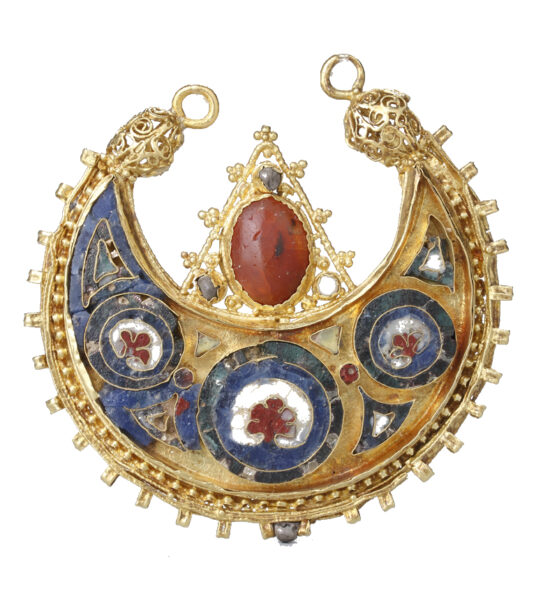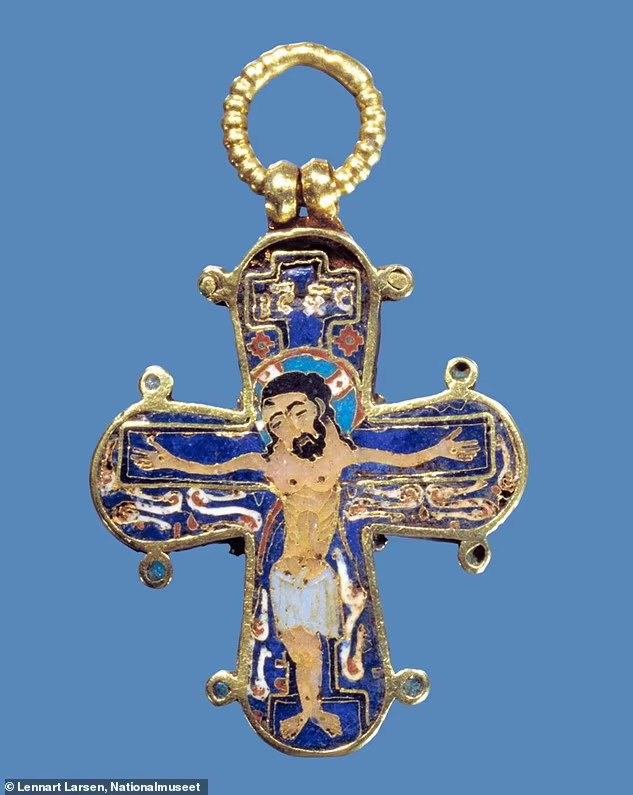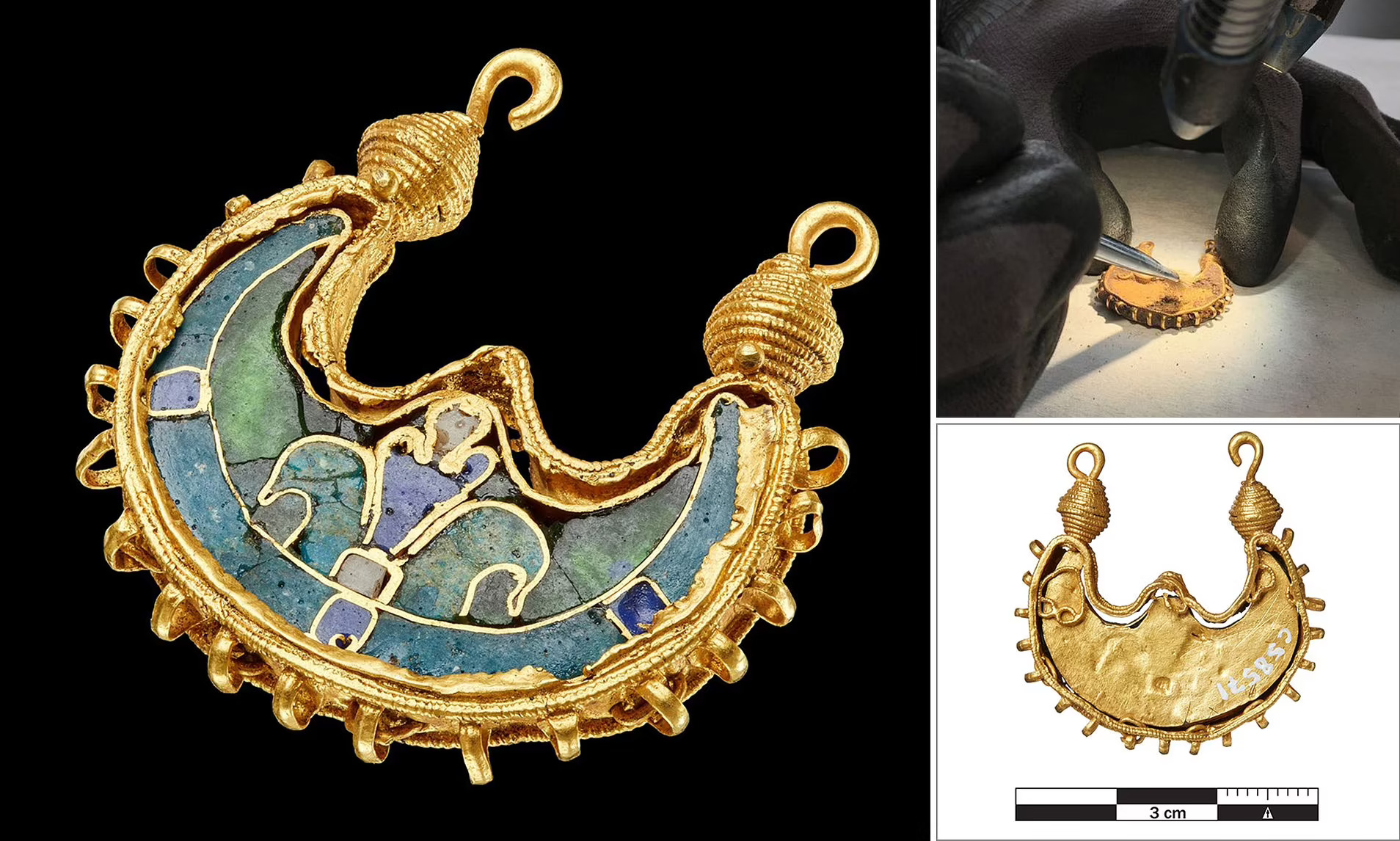A stunning gold earring discovered in Denmark may have been gifted by the Emperor of Byzantium to a Viking chief 1,000 years ago, according to experts. Dating from the 11th century, the ‘completely unique’ gold jewellery has never been seen before in the Nordic countries.

It is believed to have originally been crafted in Byzantium or Egypt and is potential evidence that the Vikings had connections all around the Mediterranean.
The earring is now being exhibited in Denmark National Museum’s Viking exhibition ‘Togtet’, which translates as ‘The Cruise’ and is all about Viking travels to the Middle East. Experts have so far been unable to find a similar earring in the area that may have formed a pair.

‘It is completely unique to us, we only know of 10 to 12 other specimens in the whole world, and we have never found one in Scandinavia before,’ said Peter Pentz, inspector at the National Museum Denmark.
The find consists of a crescent-shaped gold plate inserted into a frame made of gold threads adorned with small gold balls and gold ribbons. Its crescent-shaped plate is covered with an enamel, now slightly cracked, which would have been created by a special technique involving breaking and powdering glass before melting it with metal so it becomes opaque.
The motif of the enamel is two stylised birds around a tree or a plant, which symbolises the tree of life.
This type of jewellery is known especially from Muslim Egypt and Syria and from Byzantium and Russia.
In terms of style and craftsmanship, it is similar to the Dagmar Cross – an 11th or 12th-century Byzantine relic.The earring and the Dagmar Cross are thought to both date from the Viking Age or the earliest Middle Ages and were likely not traded but donated by kings and emperors.
That explains why the Dagmar cross was found in a queen’s grave, at St. Bendt’s Church in Ringsted, Denmark in 1683. In contrast, the new treasure was found in a field in Bøvling without known Viking sites nearby, so how it ended up there remains a mystery.
